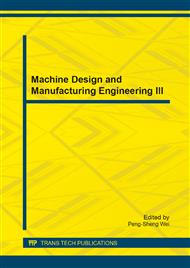p.294
p.298
p.303
p.307
p.312
p.317
p.321
p.325
p.329
Inlet Passage’s Development and Optimization of New Tidal Unit-Shaft Tubular Turbine
Abstract:
A new type of tidal unit-vertical shaft tubular turbine is designed with high efficiency, large flow rate and low water head ,which has large power under the 2~3 meters water head. According to the data of the being installed tidal units and principles of tubular turbine’s design, the high efficiency vertical shaft tubular turbine was designed under large discharge and low head, which was suitable for the tidal power station. The design also considered the requirements of turbine’s size and the details of flow through the whole flow passage were attained. The turbine’s property was predicted by the 3-d numerical simulation software on the whole flow passage. Moreover, the influences of vertical shaft’s sizes were analyzed. And the terminal of vertical shaft with or without transverse brace and longitudinal brace were analyzed to get the influence. Considering the hydraulic performance of various methods, the best guide vane opening was chosen. The results show that, the turbine unit has the best performance on efficiency, hydraulic loss, etc. with the guide vane opening 62°, meeting the power station’s design requirements. The results show that the optimal designed flow passage’s efficiency reaches up to 88.4%, the flow rate becomes much larger and the power reaches 174.63kW. Without partial vortex, the flow pattern is smooth through the whole passage also with lower hydraulic loss.
Info:
Periodical:
Pages:
312-316
Citation:
Online since:
July 2014
Authors:
Keywords:
Price:
Сopyright:
© 2014 Trans Tech Publications Ltd. All Rights Reserved
Share:
Citation:


